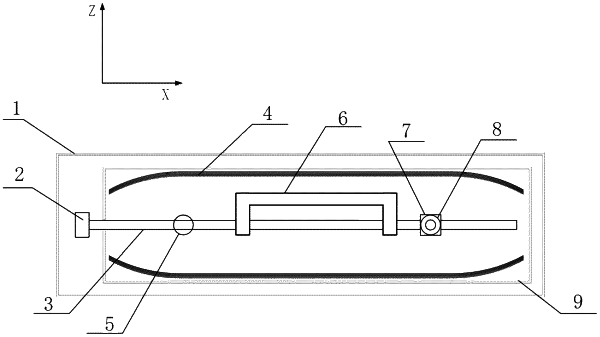| CPC G01R 33/26 (2013.01) | 6 Claims |

|
1. An optically pumped atomic beam apparatus based on curved four conductors, comprising: a vacuum chamber and the following components disposed in the vacuum chamber:
a beam source device, configured to generate an atomic beam, wherein the atomic beam is perpendicular to and intersects with a pumping laser fed from outside the optically pumped atomic beam apparatus, and achieves state purification of the atomic beam under action of the pumping laser;
a magnetic shielding chamber, configured to shield external environmental magnetic fields;
a curved four-conductor static magnetic field generation structure, configured to generate a static magnetic field under excitation of a working current; wherein the curved four-conductor static magnetic field generation structure comprises curved four conductors with same shapes and sizes; the curved four conductors are symmetrically arranged with the atomic beam as a center axis; a middle portion of each of the curved four conductors is a straight section, and two end portions of each of the curved four conductors are two curved sections bent towards the atomic beam; and each of a plurality of planes perpendicular to the atomic beam intersects with the curved four conductors to form four intersection points, the four intersection points corresponding to each plane form a rectangle with the four intersection points as four vertices of the rectangle to thereby define a plurality of rectangles corresponding to the plurality of planes, and a length-width ratio of each rectangle of the plurality of rectangles is the same;
a microwave cavity, configured to generate a microwave field under excitation of an external microwave signal, wherein the microwave field is configured to excite the atomic beam to perform magnetic resonance transition; and
a fluorescence collection device, configured to collect fluorescence photons to extract a magnetic resonance transition signal for the magnetic resonance transition, wherein the atomic beam undergoing the magnetic resonance transition perpendicularly intersects with a detection laser fed from outside the optically pumped atomic beam apparatus, and the fluorescence photons are generated under the action of the detection laser.
|